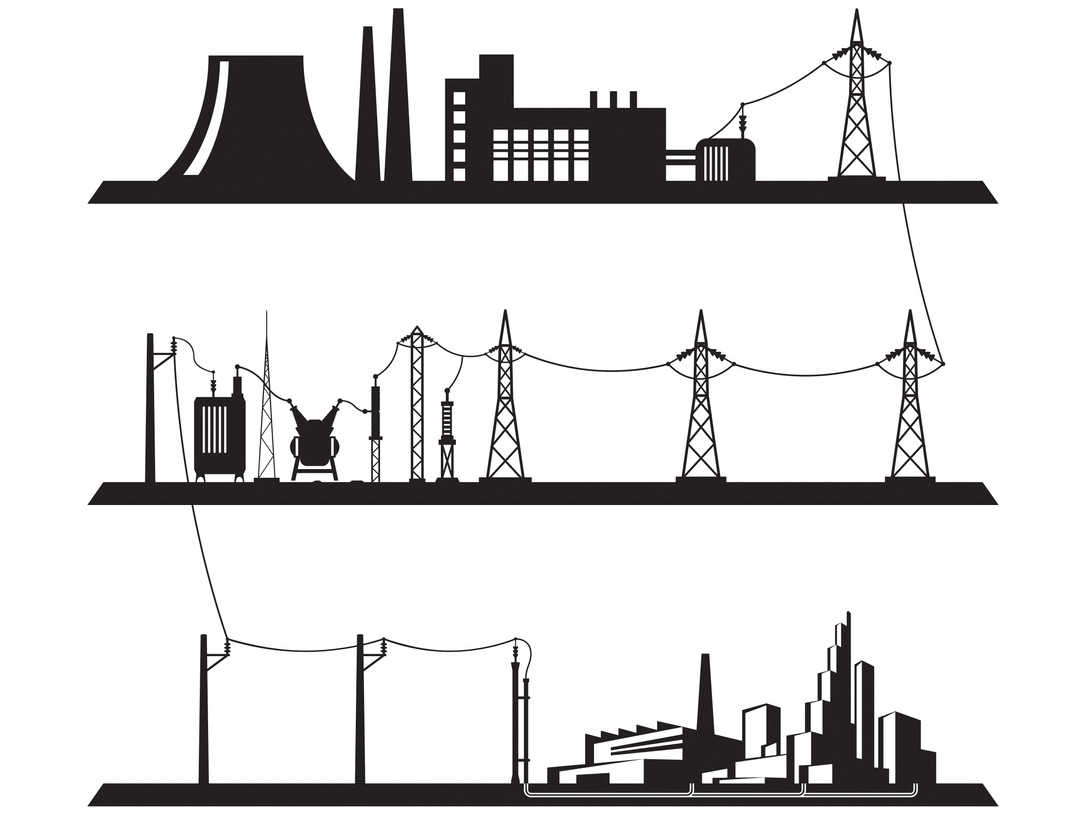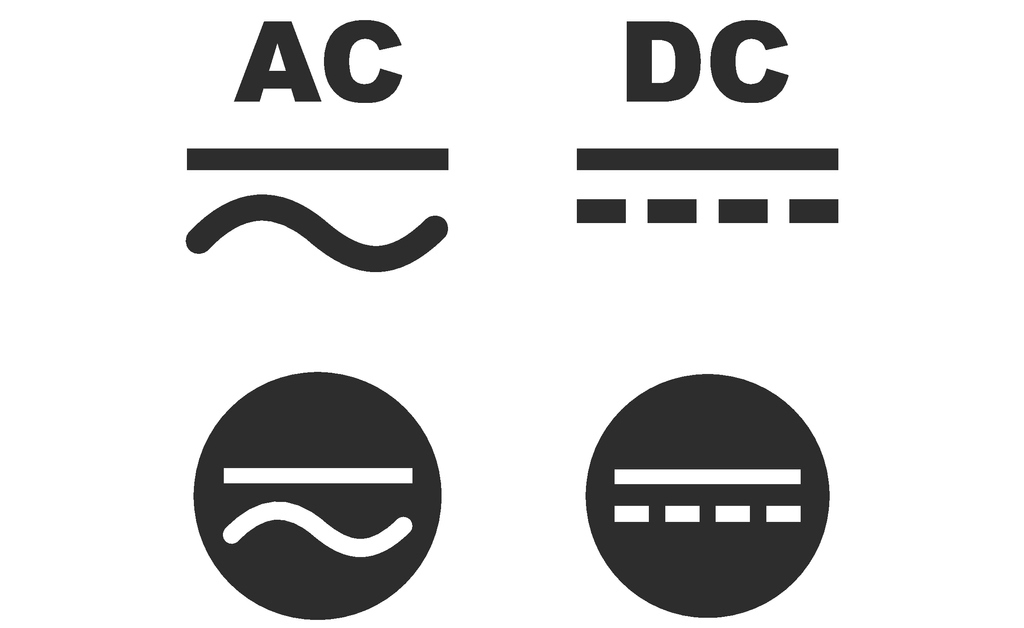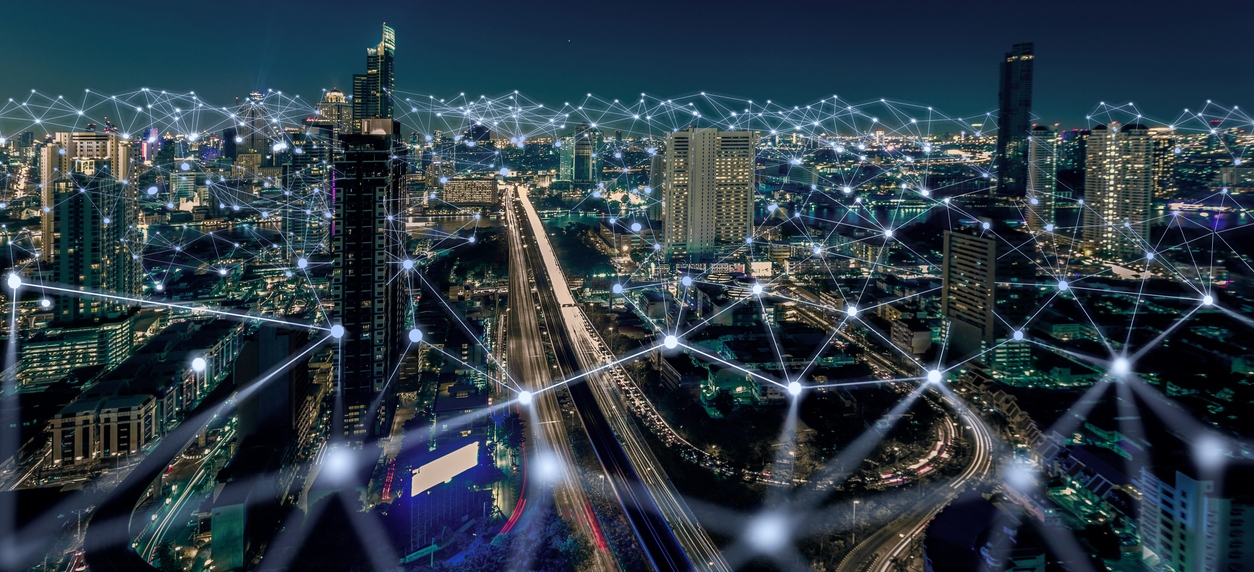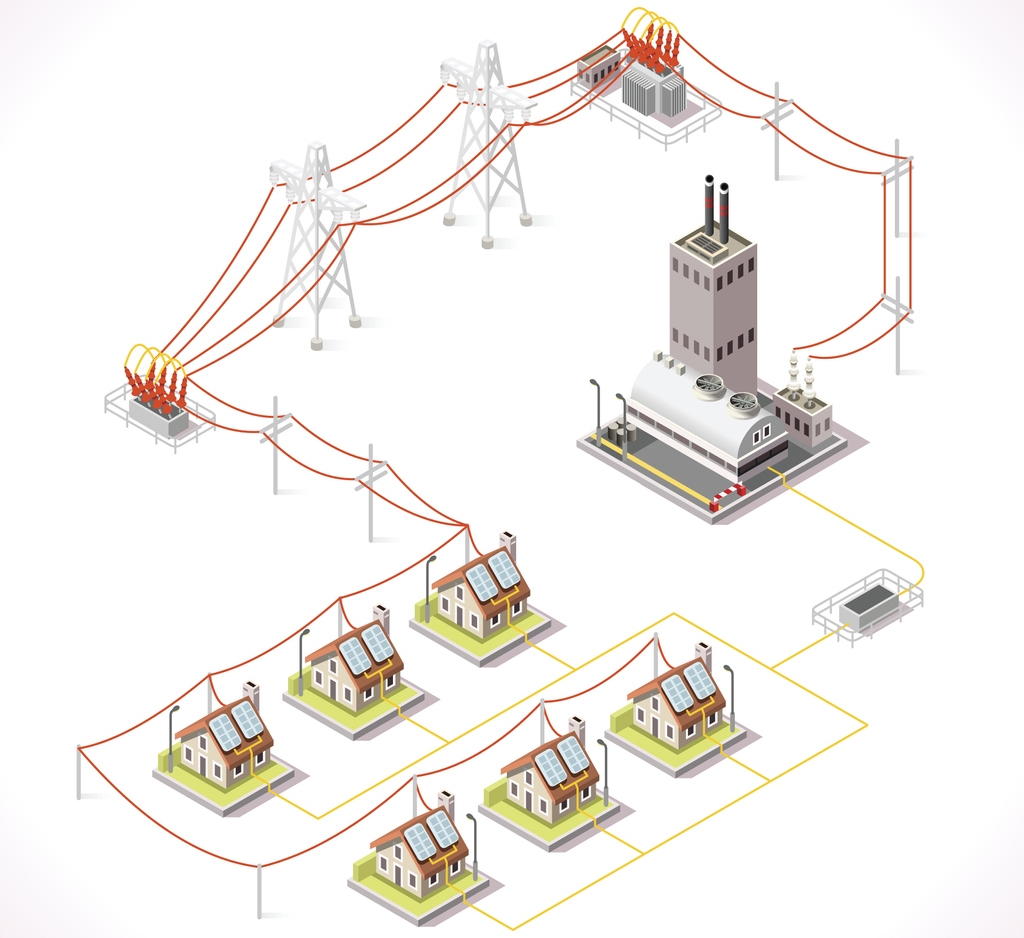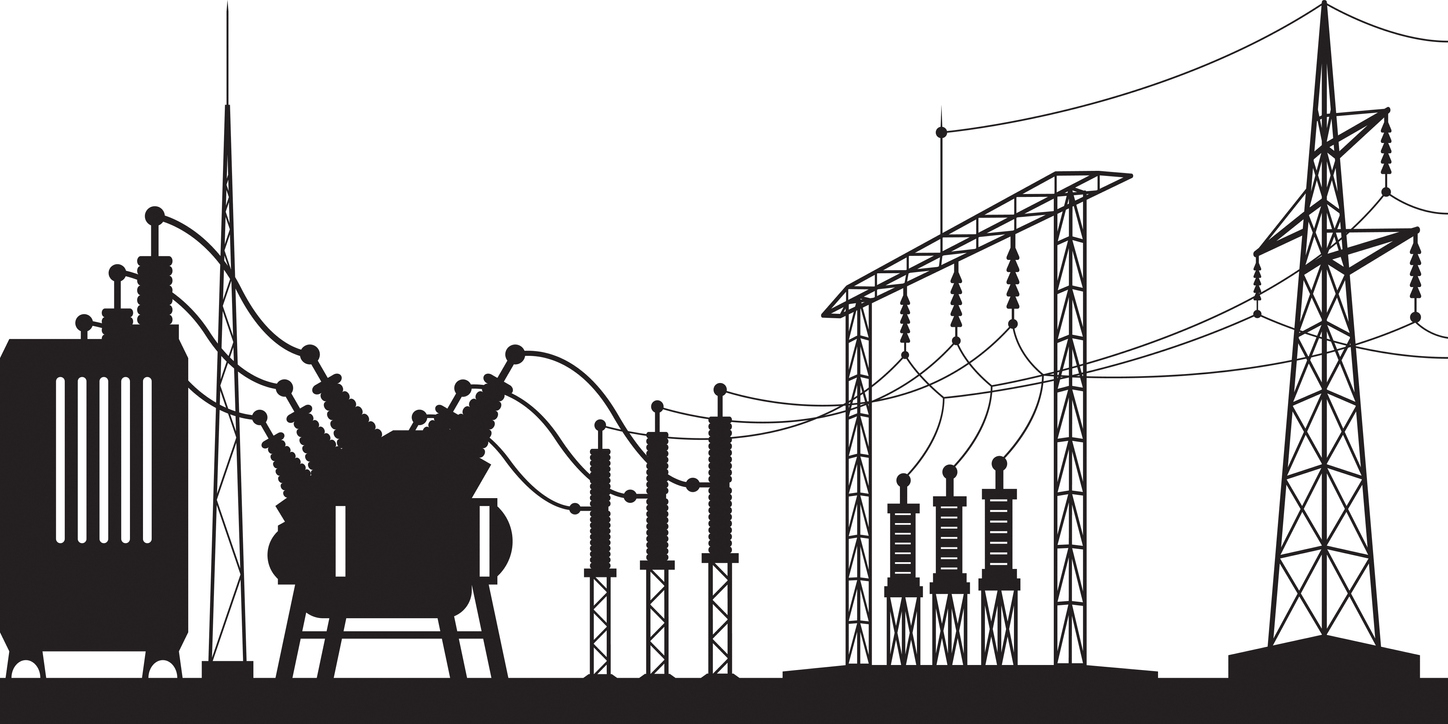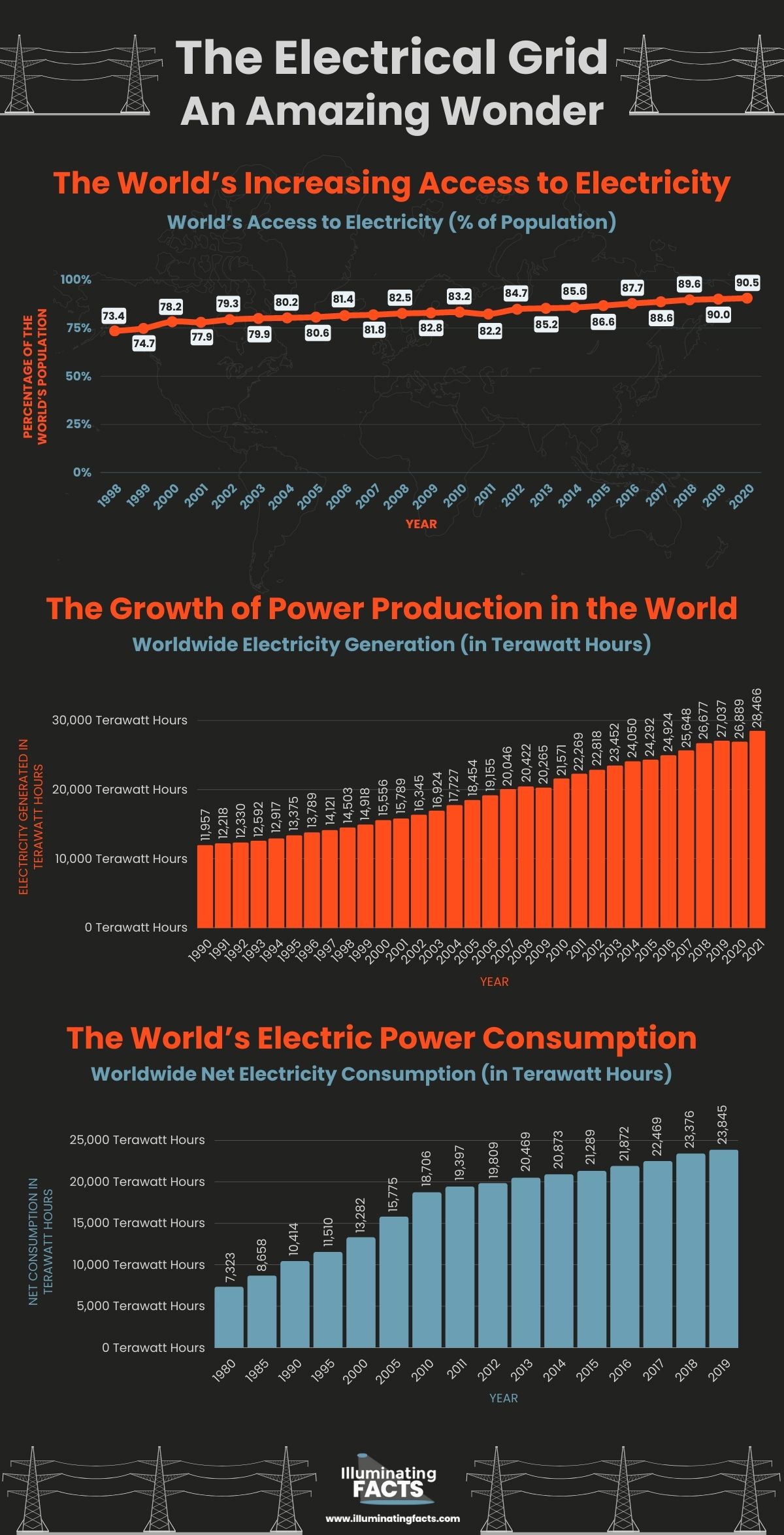Electricity is regarded by many to be one of the most important things that we should have in order to survive, as it is responsible for giving light, air, warmth, and safety to our homes. Without electricity, many of us today would struggle to survive, as we have already become accustomed to how electricity has given us everything we need for our daily living.
Moreover, electricity is vital for the modern industry, as it is heavily reliant on machines, tools, gadgets, and appliances that require electric power to work. The automobile industry is also developing numerous models of electric cars, as many of them believe that electric vehicles are significantly more cost-effective compared to gas-powered cars, as gas or oil is becoming more and more expensive.
In order for machines, appliances, and other electric-powered items to receive electricity, they must be connected to an electrical grid, which is an interconnected network of cables that delivers electricity to buildings, establishments, and homes that are connected to it. How does an electrical grid work? And how was it conceptualized? We will find out the answers as we take a look at the history, importance, and impact of the electrical grid.
History of the Electrical Grid
The Electrical Grid is one of the best inventions of all time, as it would eventually be used to bring power to other kinds of inventions that needed electricity. While the electrical grid is abundant in the world today, not many people actually know about its origins and how it became essential in the way we live. To know more, here is the history of the electrical grid.
Before the Electrical Grid
Before the conceptualization and creation of the electrical grid, there were already early versions of power systems that were developed, although these power systems could not provide enough to supply power or electricity to multiple machines or appliances. One of the earliest power systems developed was the waterwheel power system, which was designed by two electricians in England in 1881. [1]
The power system runs using a set of two waterwheels that supply power to about a dozen light bulbs. Unfortunately, the waterwheels weren’t powerful enough to provide electricity to more light bulbs, which made them impractical. But, the waterwheels would serve as an inspiration in terms of how people can generate enough electricity to power up more than a dozen light bulbs and appliances.
The Pearl Street Station
The creation of the electrical grid, also known as the power grid, wouldn’t be possible without the establishment of the Pearl Street Station, the first commercial power plant center in the United States. The Pearl Street Station was built by the Edison Illumination Company, which was owned by Thomas Edison. However, the station was built under the direction of Francis Upton, a mathematician and physicist hired by Edison to work on the power plant.
The Pearl Street Station started generating electricity on September 4, 1882, and the power plant was primarily fired by coal and had six dynamos, which are electrical generators that make direct current (DC) through a commutator. The power plant would then provide electricity to about 400 lamps in Manhattan, New York. [2]
Because of how successful the Pearl Street Station was, the Edison Illumination Company started to add three more generators, and by 1884, the power plant was able to give power to 10,164 lamps. Due to the effectiveness of the Pearl Street Station when it comes to providing electricity, many believe it to be the very first successful electrical grid in the world.
The Alternating Current Line
By the early 1890s, Thomas Edison found a competitor in the form of George Westinghouse’s alternating current or AC. [3] One of the first power plants that generated AC electricity was the Ames Hydroelectric Generating Plant, which was constructed in 1890 in Ophir, Colorado. Another power plant that took advantage of AC electricity is the Adams Power Plant Transformer House, which transfers the collected electricity from Niagara Falls to Buffalo, New York, and other nearby areas.
AC vs. DC
As alternating current or AC technology is becoming more and more popular, Thomas Edison did his best to make his direct current or DC technology a fierce competitor for AC. This competition as to which type of current is better or more popular would become known in world history as the “War of the Currents.” [4]
Direct current or DC power, as its name already suggests, is a very direct and linear current of electricity that moves in a straight line during transmission. When it comes to voltage delivery, direct current is considered to be more consistent, so its voltage would remain the same if it is transmitted on a short transmission line or cable. One of the best examples of direct current is the power you will receive from solar cells and batteries.
On the other hand, alternating current or AC power is the opposite of DC power in terms of direction, as it can go in different directions as opposed to traveling in a straight line, like what DC power does. The current flow of AC power usually changes depending on the flow of electrons, which can either be positive or negative.
When it has a positive charge, the AC power moves upward, but when it has a negative charge, it moves downward. Usually, AC power moves at a wave-like motion, and this allows the alternating current to travel much farther than the direct current. The long-distance capability of AC power is highly advantageous, as the homes and buildings that receive electricity can be far away from the generator that creates the electricity. [20]
Ultimately, it was decided that alternating current or AC is the superior choice when it comes to providing a source of electricity for multiple tools, machines, and appliances. The reason why AC was preferred during that period was that it was much easier and less expensive to control the voltage of the alternating current compared to the direct current. Moreover, AC generators can actually provide power even from far away as opposed to DC generators that can only produce power for light bulbs and appliances nearby.
Power Grid in the United Kingdom
Besides the United States, the United Kingdom is also benefitting from the rise of electricity and the power grid. One of the first power stations in the United Kingdom is the Neptune Bank Power Station, which was commissioned in 1901 and is located on the River Tyne. In addition to being one of the first power stations in the UK, the Neptune Bank Power Station is also the first power plant to supply electricity for other purposes besides street lighting and domestic use. [5]
The Neptune Bank Power Station was designed and built by Charles Merz, an electrical engineer that is the co-founder of the Merz and McLellan electrical engineering consultancy. By 1912, the Neptune Bank Power Station was improved to be the largest integrated power system in Europe. Merz would eventually become the head of the UK’s parliamentary committee, and from there, he would become instrumental in the creation of the Williamson Report of 1918, which was essential in creating the Electricity (Supply) Act of 1919.
The said law would become the first step in creating an integrated power grid or electrical system in the United Kingdom. The law would be strengthened by the Electricity (Supply) Act of 1926, which was vital in the establishment of the National Grid, the electric transmission network that would provide power in most areas of Great Britain. The National Grid was officially launched in 1938.
The Electrical Grid during the Great Depression
During the 1900s in the United States, all of the electricity provided to homes was offered by unregulated electric companies that would often take control of the market and raise their prices for dubious reasons.
However, in the middle of the Great Depression, most of the electric companies that came out of the 1900s became bankrupt, and by 1935, electricity and electric utilities were recognized as public goods and were then regulated to ensure that overpricing and monopolizing electricity were prohibited.
The regulation was made possible by the Public Utility Holding Company Act. [6] The electrical grid in the United States, which is created by the private electric companies, was made to be more uniform and connected in order to provide equal amounts of power for most areas in the country.
The Expansion of the Electrical Grid
With the Energy Policy Act (1992) in the United States, electric companies would need to allow transmission line owners to gain access to their network, which means that the network is free to be opened and modified by the transmission line owners. The law would then lead to the rebuilding of the electric industry and how it should be operated.
In addition, with the law, the three components of the electrical grid, which are generation, transmission, and distribution, can be handled by different companies instead of having only one company handle those three components. Furthermore, because of the negative effects of electricity overconsumption on the environment, the Energy Policy Act of 2005 provides rewards or incentives for companies or individuals that would produce an effective alternative for energy production. [7]
The Importance of the Electrical Grid for Businesses
The billions of homes that are located in different parts of the world highly benefit from the electrical grid, as it provides the homes with light, cold, warmth, and power to run different appliances and gadgets that are essential in improving the quality of life of the people living in those homes. However, the electrical grid is also very advantageous for millions of businesses around the world, as they wouldn’t really be able to operate without electricity.
Almost all businesses today are reliant on electricity, especially the ones that use electric-powered machines and gadgets like sewing machines, assembly lines, and computers. Businesses need much more power compared to homes or residences, which is why they would really need to be connected to a large power grid instead of alternative sources like generators, solar cells, or batteries, which really couldn’t provide much power for longer periods of time. The seamless generation, transmission, and distribution of electricity ensure that businesses will be able to get a steady supply of electricity that they need to keep the company or brand going. [21]
The Different Scales of the Electrical Grid
The electrical grid comes in different scales, and the scale that is applied to a specific country or city depends on how big the area is and how much power is needed to be generated to provide electricity to all the citizens living in that area. Here are details about the different scales of the electrical grid.
Microgrid
The microgrid is a scale of the electrical grid that is much smaller compared to other scales and is typically connected to a wider synchronous grid, although it can be separated to act as its own power grid for a small local area. If the wider synchronous grid experiences an outage, the microgrid can still function in an area, although there are cases where it may also be affected by an outage. Nonetheless, the microgrid has a function called islanding, which makes it act independently even if there is no power coming from the wider synchronous grid. [8]
One of the best examples of a microgrid is the one found in Les Anglais, a rural commune in Haiti. The power grid there is a wirelessly managed microgrid that has three-tier architecture and cloud-based monitoring, which makes the Les Anglais microgrid one of the most advanced power grids in the world.
A microgrid system, which consists of several microgrids, is found in Mpeketoni, Kenya. The system, which is called the Mpeketoni Electricity Project, has been incredibly beneficial for Mpeketoni, as they have experienced a large growth in infrastructure and income thanks to the increased productivity brought by the microgrids. [22]
Wide-Area Synchronous Grid
The wide-area synchronous grid is arguably the most common scale of the power grid in the world. This scale of the electrical grid, which is known in North America as an interconnection, connects various generators that provide AC power to consumers that have the same relative frequency. In North America, there are four main wide-area synchronous grids, and these are:
- Eastern Interconnection
- Western Interconnection
- Texas Interconnection
- Quebec Interconnection
There are several benefits of having a wide-area synchronous grid in a country or region, and one of these benefits is the pooling of power generation that allows the grid to have lower generation costs. All in all, having a wide-area synchronous grid is a cost-effective way for countries and regions to provide electricity for their citizens.
Super Grid
The supergrid, as its name already suggest, is a very large electrical grid that often covers multiple regions or continents. [9] However, as of 2022, there is no super grid that exists in the world, although there is a plan to install a super grid within North Africa, Europe, and the Middle East, as well as another super grid in the United States.
A super grid would use high-voltage direct current or HVDC in order to transmit electricity at much longer distances compared to microgrids and synchronous grids. But, there is still a 1.6% loss of electricity per 1000 kilometers for the HVDC transmission, but this is still lower than synchronous grids.
The Main Components of the Electrical Grid
There are three main components of the electrical grid, and these are generation, transmission, and distribution. All of these components are essential in how the electrical grid works, and without one of them, the power grid will basically be useless. Here are the simple things that you should know about the main components of the electrical grid. [10]
Generation
Of course, an electrical grid wouldn’t be able to provide power if it cannot generate electricity. So, it would need electromechanical generators that are located inside power stations. These generators are powered by heat engines or through collecting kinetic energy produced by wind or water. Besides those energy sources, generators are also able to get power from geothermal or photovoltaic sources.
Transmission
The generated power from the generators would then be transferred to transmission lines which are towers with cables connected to them. The cables are where the electricity runs, and these cables are also connected together to form a network. The transmitted electricity from transmission lines is often at higher voltages and lower amperages for it to travel faster and longer.
The generating station or power station would usually increase the voltage of the electricity it will transmit, and then the local substations will be the ones responsible for decreasing that voltage in order for it to be safe for distribution to various homes, buildings, and infrastructures.
Distribution
The final step of transferring electricity from the power grid to consumers is distribution, wherein the voltage transmitted by the generating station will be lowered by local substations, and these substations would then distribute ample amounts or voltages of electricity to consumers.
Most of the distribution of electricity conducted in the United States and other countries is the radial distribution network, which is the type of distribution where a substation will receive electricity from the transmission network, then that electricity is reduced in terms of voltage, and that electricity will be sent to a bus (a busbar that is responsible for local high current power distribution), which would then allow feeders to fan out the electricity to different directions and lines within the power grid.
The World’s Increasing Access to Electricity
As power grids or electrical grids are becoming more accessible and more affordable to construct, there are now many countries that benefit from them. Throughout the years, the world’s access to electricity has been increasing, and the increase is typically beneficial since it improves the overall quality of living for many citizens in various countries. Here are the stats created by World Bank that shows the world’s increasing access to electricity. [11]
World’s Access to Electricity (% of Population) |
|
| Year | Percentage of the World’s Population |
| 1998 | 73.4 |
| 1999 | 74.7 |
| 2000 | 78.2 |
| 2001 | 77.9 |
| 2002 | 79.3 |
| 2003 | 79.9 |
| 2004 | 80.2 |
| 2005 | 80.6 |
| 2006 | 81.4 |
| 2007 | 81.8 |
| 2008 | 82.5 |
| 2009 | 82.8 |
| 2010 | 83.2 |
| 2011 | 82.2 |
| 2012 | 84.7 |
| 2013 | 85.2 |
| 2014 | 85.6 |
| 2015 | 86.6 |
| 2016 | 87.7 |
| 2017 | 88.6 |
| 2018 | 89.6 |
| 2019 | 90 |
| 2020 | 90.5 |
The Growth of Power Production in the World
As the percentage of the world’s population getting access to electricity is increasing, it is obvious that the different electrical grids or power grids would have to increase their production of electricity in order to meet the demand.
Power production in the world has continued to increase from 1990 to 2019, but by 2020, the numbers went down slightly. This is most likely caused by the global pandemic, as many stores and establishments remained closed for the year, thus leading electric companies to reduce their power production. Here are the stats in terms of global power production from 1990 to 2021 for you to see how well the production of electricity has increased over the years. [12]
Worldwide Electricity Generation (in Terawatt Hours) |
|
| Year | Electricity Generated in Terawatt Hours |
| 1990 | 11,957 |
| 1991 | 12,218 |
| 1992 | 12,330 |
| 1993 | 12,592 |
| 1994 | 12,917 |
| 1995 | 13,375 |
| 1996 | 13,789 |
| 1997 | 14,121 |
| 1998 | 14,503 |
| 1999 | 14,918 |
| 2000 | 15,556 |
| 2001 | 15,789 |
| 2002 | 16,345 |
| 2003 | 16,924 |
| 2004 | 17,727 |
| 2005 | 18,454 |
| 2006 | 19,155 |
| 2007 | 20,046 |
| 2008 | 20,422 |
| 2009 | 20,265 |
| 2010 | 21,571 |
| 2011 | 22,269 |
| 2012 | 22,818 |
| 2013 | 23,452 |
| 2014 | 24,050 |
| 2015 | 24,292 |
| 2016 | 24,924 |
| 2017 | 25,648 |
| 2018 | 26,677 |
| 2019 | 27,037 |
| 2020 | 26,889 |
| 2021 | 28,466 |
The World’s Electric Power Consumption
Due to the growth of power production, it is also safe to say that power consumption is also increasing by numbers throughout the years. From 7.323 terawatt hours in 1980, the numbers increased to 23,845 terawatt hours in 2019.
The high power consumption of the world today is mostly attributed to the increasing number of tools, appliances, machines, and infrastructures that need electricity. In 1980, there were probably fewer items that required electricity, and by 2019, almost all gadgets and tools that we have today rely so much on electric power. Here are the stats that show the growth of power consumption in the world. [13]
Worldwide Net Electricity Consumption (in Terawatt Hours) |
|
| Year | Net Consumption in Terawatt Hours |
| 1980 | 7,323 |
| 1985 | 8,658 |
| 1990 | 10,414 |
| 1995 | 11,510 |
| 2000 | 13,282 |
| 2005 | 15,775 |
| 2010 | 18,706 |
| 2011 | 19,397 |
| 2012 | 19,809 |
| 2013 | 20,469 |
| 2014 | 20,873 |
| 2015 | 21,289 |
| 2016 | 21,872 |
| 2017 | 22,469 |
| 2018 | 23,376 |
| 2019 | 23,845 |
The Negative Effects of Electricity Overconsumption
Despite the many benefits that electricity provides us, there are some negative effects of overconsuming it, and these effects are mostly connected to the Earth’s environment. According to the United States Environmental Protection Agency, here are the environmental effects of generating too much electricity. [14]
- Greenhouse gas emissions that can cause temperature changes on Earth.
- Air pollutants would make the air more toxic for humans and animals.
- It can cause water pollution that can affect the survival and quality of life of sea creatures.
- Can generate too much solid waste that can be hazardous to the health of humans and animals
- Degradation of land that is utilized for fuel production and electricity generation.
- It can greatly impact the ecosystems on Earth.
Because of these negative effects, many agencies and organizations around the world are trying to come up with alternatives to electricity so that we won’t have to rely too much on power grids or electrical grids. In addition to alternatives, some organizations also promote a cleaner and more efficient way of generating and distributing energy so that there will be fewer negative effects on the environment.
Interesting Facts about Electricity and the Electrical Grid
- The first power station in the United Kingdom was the Holborn Viaduct Power Station, which was built in Central London and started operations in 1882. The Holborn Viaduct Power Station was commissioned by the Edison Electric Light Company.
- Besides being the first power station in the United Kingdom, the Holborn Viaduct Power Station is also the world’s first coal-fired power station that generates electricity for public utilities.
- The size of the power grid in the United States is estimated to be 450,000 miles long. [15]
- It costs the United States about $33 billion a year solely for fixing issues with power outages caused by natural disasters or human error.
- Severe weather conditions are considered to be the number one cause of power outages in the United States. Severe weather can cause numerous problems for the three main components of electrical grids, including unusable inventory, damage to transmission lines, delayed generation of electricity, and more.
- The two major power grids in North America are the Eastern Interconnection and the Western Interconnection. The former operates on the east of the Rocky Mountains (a large mountain range near the center of North America), while the latter operates on the west of the Rocky Mountains. [16]
- In order for inspectors and grid operators to quickly identify problems in the power grid, they would use a synchrophasor, which is a device that reports power grid data 30 times per second, which is incredibly fast.
- There are more than 120,000 linemen that are working on inspecting and fixing issues on the power grids in the United States.
- As of 2021, the United States government has already spent more than $100 million on power grid cybersecurity to ensure that the grids wouldn’t be compromised. [17]
- Coal is the world’s largest source of much-needed energy for generating electricity. The coal is responsible for strengthening and retaining the heat on the heat engines of generators.
- The reason why birds don’t get electrocuted on power lines is that they are just sitting on one line, which is considered safe. However, once they touch two lines, their body will create a circuit, and the electricity in the two lines will travel through their body, and the birds will be electrocuted. [18]
- The Recovery Act of 2008 is aimed at improving the power grids in the United States. The government invested about $4.5 billion to upgrade different aspects of the electrical grids, which includes the purchase of 10,000 automated capacitors and 15.5 million smart meters.
- About 90% of power lines remain bare and insulated, which makes them susceptible to damaged. However, there are some that have weather-resistant coatings.
- Although most of the source of energy is coal, 27% of the total energy source in the world is natural gas. The percentage of coal as the primary source of energy is 39%.
- If you are wondering why power lines create a buzzing noise whenever it rain, it is caused by a strange phenomenon called corona discharge. This phenomenon happens when the air becomes ionized and surrounds an electrically-charged conductor, which is the power line. [19]
- It is calculated that a simple spark of electricity can reach 3,000 volts.
- Hurricane Ike, which wreaked havoc in the US in 2008, is reported to have caused $70 billion in damages to power grids and other infrastructures.
- On the other hand, Superstorm Sandy in 2012 caused $52 billion in damages.
- The offices of the New York Times, a popular newspaper, became one of the very first customers of the Pearl Street Station in Manhattan.
- The Texas Interconnection, one of the wide-area synchronous grids in the US, covers most areas of the state of Texas. Although Texas can be connected to the East and West Interconnections, the Texas Interconnection was established due to political reasons, as the grid is not subject to federal regulation.
References
[1] Peak Substation Services. A Brief History of the Power Grid. Peak Substation Services. Retrieved September 1, 2022, from https://peaksubstation.com/a-brief-history-of-the-power-grid/
[2] J.S. (2012, October 25). How electricity grew up? A brief history of the electrical grid. Buzz: The Power2Switch Blog. Retrieved September 1, 2022, from https://power2switch.com/blog/how-electricity-grew-up-a-brief-history-of-the-electrical-grid/index.html
[3] Edison Tech Center. AC Power History and Timeline. Edison Tech Center. Retrieved September 1, 2022, from https://edisontechcenter.org/AC-PowerHistory.html
[4] Waxman, O. (2019, October 25). The Real History Behind The Current War. Time Magazine. Retrieved September 1, 2022, from https://time.com/5698700/current-war-real-history/
[5] Grace’s Guide. (2022, January 19). Neptune Bank Power Station. Grace’s Guide. Retrieved September 1, 2022, from https://www.gracesguide.co.uk/Neptune_Bank_Power_Station
[6] The Living New Deal. (2021, January 18). Public Utility Holding Company Act (1935). The Living New Deal. Retrieved September 1, 2022, from https://livingnewdeal.org/glossary/public-utility-holding-company-act-1935/
[7] United States Environmental Protection Agency (EPA). (2022, January 28). Summary of the Energy Policy Act. United States Environmental Protection Agency (EPA). Retrieved September 1, 2022, from https://www.epa.gov/laws-regulations/summary-energy-policy-act
[8] Lantero, A. (2014, June 17). How Microgrids Work. US Department of Energy. Retrieved September 1, 2022, from https://www.energy.gov/articles/how-microgrids-work
[9] H.H. (2017, January 17). What is a supergrid? The Economist. Retrieved September 1, 2022, from https://www.economist.com/the-economist-explains/2017/01/17/what-is-a-supergrid
[10] Tai Sin Electric. Electrical Grid: What are the four components of electric grid? Tai Sin Electric. Retrieved September 1, 2022, from https://www.taisin.com.sg/electrical-grid/
[11] The World Bank. Access to electricity (% of population). The World Bank. Retrieved September 1, 2022, from https://data.worldbank.org/indicator/EG.ELC.ACCS.ZS
[12] Alves, B. (2022, July 20). Global power production 1990-2021. Statista. Retrieved September 1, 2022, from https://www.statista.com/statistics/270281/electricity-generation-worldwide/
[13] Alves, B. (2022, February 15). Global electricity consumption 1980-2019. Statista. Retrieved September 1, 2022, from https://www.statista.com/statistics/280704/world-power-consumption/
[14] United States Environmental Protection Agency (EPA). (2022, July 11). About the US Electricity System and its Impact on the Environment. United States Environmental Protection Agency (EPA). Retrieved September 2, 2022, from https://www.epa.gov/energy/about-us-electricity-system-and-its-impact-environment
[15] Vitale, S. (2016, July 19). 9 Surprising Facts About the American Electrical Grid. MidWest Industrial Supply. Retrieved September 2, 2022, from https://blog.midwestind.com/american-electrical-grid/
[16] Peoria Magazine. (2017, June). 5 Things You Didn’t Know About the US Power Grid. Peoria Magazine. Retrieved September 2, 2022, from https://www.peoriamagazines.com/ibi/2017/jun/5-things-you-didnt-know-about-us-power-grid
[17] PPReps. (2021, July 24). 10 Interesting Facts About the Power Line Industry. Pacific Power Reps. Retrieved September 2, 2022, from https://ppreps.com/10-interesting-facts-about-the-power-line-industry/
[18] Nifong, T. (2014, June 20). 10 Fun Facts about Electricity. Berwick Electric Co. Retrieved September 2, 2022, from https://www.berwickelectric.com/the-electrical-blog/bid/71719/10-Fun-Facts-about-Electricity
[19] Electrical4U. (2020, October 26). Corona Discharge: How to Reduce the Corona Effect. Electrical4U. Retrieved September 2, 2022, from https://www.electrical4u.com/corona-effect-in-power-system/
[20] James, L. (2020, March 19). What’s the difference between AC and DC power? Power & Beyond. Retrieved September 3, 2022, from https://www.power-and-beyond.com/whats-the-difference-between-ac-and-dc-power-a-915187/
[21] Just Energy. Power Grid: What Is It and How Does It Work? Just Energy. Retrieved September 3, 2022, from https://justenergy.com/blog/power-grid-what-is-it-and-how-does-it-work/
[22] Burger, A. (2019, October 7). Kenya Continues Rollout of Off-Grid Minigrids. Microgrid Knowledge. Retrieved September 3, 2022, from https://microgridknowledge.com/kenya-off-grid-minigrids/


